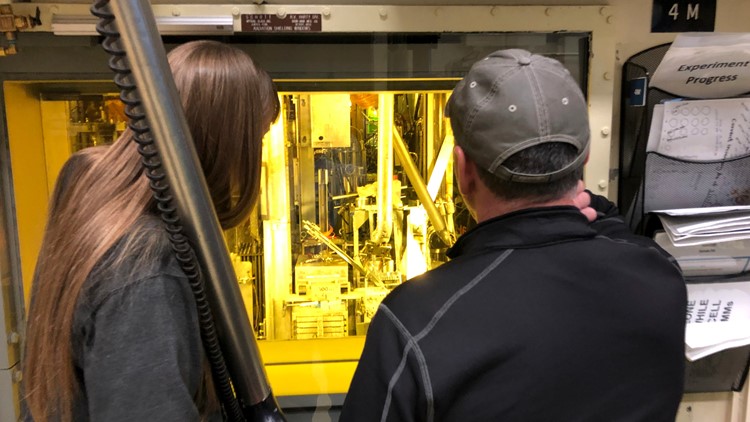BOISE, Idaho — Idaho has been selected as the site for a proposed nuclear test reactor that would dramatically reduce the time needed to develop nuclear fuels and components for a new generation of nuclear reactors that could help reduce global warming, the U.S. Department of Energy said Wednesday.
The Energy Department said it selected its 890-square-mile (2,300-square-kilometer) site in eastern Idaho that includes the Idaho National Laboratory to build the Versatile Test Reactor, or VTR.
The VTR is a sodium-cooled fast test reactor that would be the first fast spectrum test reactor to operate in the United States in nearly three decades. The Energy Department has requested funding from Congress to move the VTR project into the design phase. The project includes facilities for examining material tested in the reactor as well as managing spent fuel produced by the reactor.
Scientists have said the test reactor could help lead to new nuclear reactors and reduce the use of fossil fuels blamed for global warming. Efforts to reduce greenhouse gas emissions by developing new technologies with nuclear power began during the Obama administration and have continued under both the Trump and Biden administrations. About 20% of the nation’s energy comes from about 100 nuclear power plants.
“Bringing a fast neutron test source back to the U.S. is an investment in our transition to a future carbon-free economy,” Kathryn Huff, assistant secretary for the Energy Department’s Nuclear Energy, said in a statement on Wednesday. “Now that we have completed this important step in the decision-making process, I look forward to working with Congress to obtain the funding needed to someday make VTR a reality.”
Specifically, the Department of Energy, or DOE, in May released an environmental impact statement that found building the test reactor in Idaho would have minimal impacts on the environment. Based on that study, the department on Friday signed off on what’s called a record of decision to formally select Idaho as the site for the project.
“DOE needs to develop this capability to establish the U.S. testing capability for next-generation nuclear reactors — many of which require a fast-neutron spectrum for operation — thus enabling the U.S. to regain technology leadership for the next generation nuclear fuels, materials, and reactors,” the agency said in the Friday document. “The lack of a versatile fast-neutron-spectrum testing capability is a significant national strategic risk affecting the ability of DOE to fulfill its mission to advance the energy, environmental, and nuclear security interests of the U.S. and promote scientific and technological innovation.”
The Energy Department is hoping to have the test reactor running by the end of 2026. Currently, such nuclear testing capacity only exists in Russia, the department said.
The reactor would give the nation a dedicated “fast-neutron-spectrum” testing capability. Such reactors are called fast reactors. The advantage of such a test reactor, scientists say, is that fast neutrons have a higher energy level and speed the testing of materials, fuels and instruments needed in a new wave of planned commercial nuclear reactors being developed by civilian companies and university researchers.
The disadvantage of such reactors, other scientists have said, is that they are cooled with harder-to-control liquid sodium and fueled by plutonium, increasing potential nuclear terrorism risks because plutonium can be used to make nuclear weapons. Critics also say they produce waste even more hazardous and difficult to dispose of than conventional reactors.
The department has not yet decided whether fuel fabrication for the test reactor will be at the Idaho National Laboratory or its Savannah River Site in South Carolina.
The environmental impact statement noted that the reactor would produce spent nuclear fuel beyond 2035, going past a deadline the Energy Department has with Idaho concerning spent nuclear fuel at the site. That document states that the Energy Department would explore possible approaches with Idaho regarding that issue.
Idaho is currently preventing the Energy Department from bringing in research quantities of spent nuclear fuel to the Idaho National Laboratory because the department has been unable to convert 900,000 gallons (340,000 liters) of liquid radioactive waste into a solid form.
The laboratory and assorted nuclear waste in the sagebrush-steppe region sit above a Lake Erie-sized aquifer that supplies water to cities and farms in that part of the state.
Watch more Local News:
See the latest news from around the Treasure Valley and the Gem State in our YouTube playlist:



